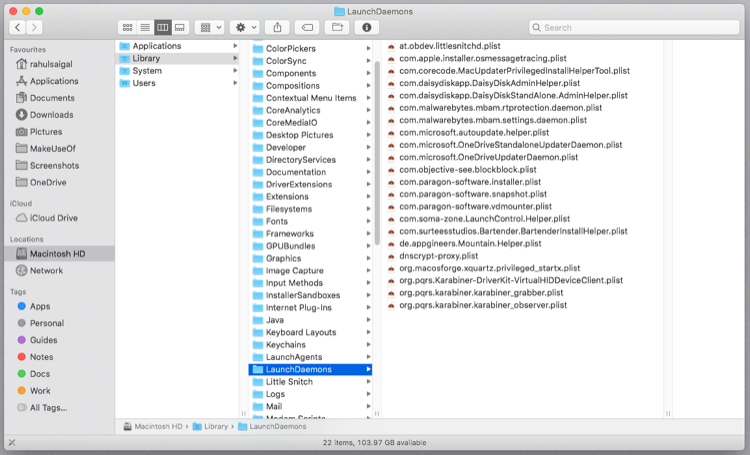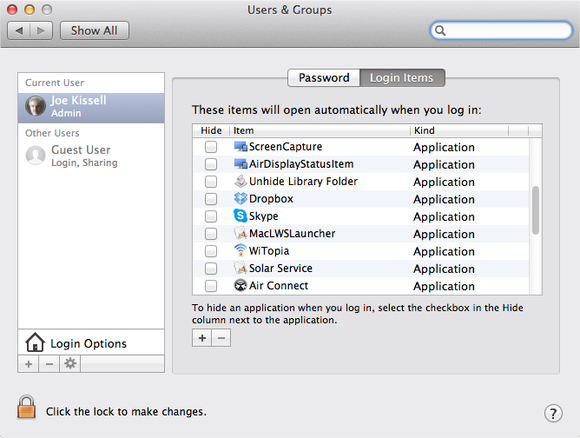

- CONTROL MAC STARTUP PROGRAMS HOW TO
- CONTROL MAC STARTUP PROGRAMS FULL
- CONTROL MAC STARTUP PROGRAMS WINDOWS 10
Like launch agents, daemons are little automated bits of an app that run in the background. You can’t delete these, but you can manage them.ĭaemons. These help applications start when your Mac boots up. txt files of apps that sit quietly in the background and help the app run once you start it up.Īpplication login items. This may be for background sync, or for apps that need access to other apps while they run. Some apps need to activate when you login to your Mac. Here are some typical types of startup programs you likely won’t need to worry about: Most startup programs need to activate when you boot your Mac up. Instead of finding the app and clicking on an icon to activate it, your Mac tells the app when it’s turned on, and the app activates in the background.Īgain, this is typically convenient, but some apps activate at startup when they don’t need to.

What are Mac startup programs?Ī startup program is an app that spins up when you start your computer.
CONTROL MAC STARTUP PROGRAMS HOW TO
Here, we’ll tell you how to manage startup programs Mac computers don’t need and tell you about a few ways to manage your system better. Calendars should be syncing in the background, and if you have a third-party app for managing the health of your computer, it should also be proactively starting up when you boot your computer. It’s easy to see how there are apps that would benefit from running at startup. Those are startup (or login) items, and while they’re meant for convenience, some can be unruly. There are probably quite a few apps on your Mac that operate int he background, and spin up when you start your computer up.
CONTROL MAC STARTUP PROGRAMS WINDOWS 10
PREVIOUS AND RELATED CONTENTĮd Bott's extensive collection of Windows 10 tips, organized by category.Make your Mac fast and secure with CleanMyMac X. To completely remove an unwanted program from the startup list, you'll need to use the original installer app (assuming the developer included that capability) or a utility like the excellent AutoRuns, part of the Microsoft Sysinternals collection. (Both options are also available if you right-click any entry on the list.)ĭisabling a startup entry doesn't uninstall it, nor does it prevent that program from running when you decide you need it. To re-enable a disabled app, click the Enable button. To prevent a program from starting automatically, click its entry in the list and then click the Disable button at the bottom of the Task Manager window. (Right-click that heading and choose the Disk I/O at startup and CPU at startup columns to see even more details, as shown in the screenshot above.) The performance impact of each entry in the list is categorized as Low, Medium, or High in the Startup Impact column. That tab displays a startlingly long list of programs that have been configured to start up every time you turn on your PC.
CONTROL MAC STARTUP PROGRAMS FULL
(If you don't see any tabs, click the More details link at the bottom to expand Task Manager to its full glory.) To start, press Ctrl+Shift+Esc to open Task Manager and then click the Startup tab. Windows 10 offers control over a wider range of auto-starting programs directly from Task Manager. In older Windows versions, you probably became accustomed to managing a limited selection of these nuisances using the Msconfig utility. You almost certainly want your cloud file storage utility to run automatically so it can sync changes and new files added to OneDrive or Dropbox while you were away, for example.īut other auto-start programs are simply resource-draining vampires, placed there by program developers who decided their little icon in the system tray should always be visible, even though you rarely use their software. Most of the time, auto-starting programs are benign and useful. Those auto-start programs can run as a result of entries in the Windows registry, scheduled tasks, Group Policy settings, even the ancient Win.ini file.

Every time you start your PC, Windows checks in more than a dozen places to see if you (or, more likely, some program you installed) has specified that a program should start automatically.


 0 kommentar(er)
0 kommentar(er)
